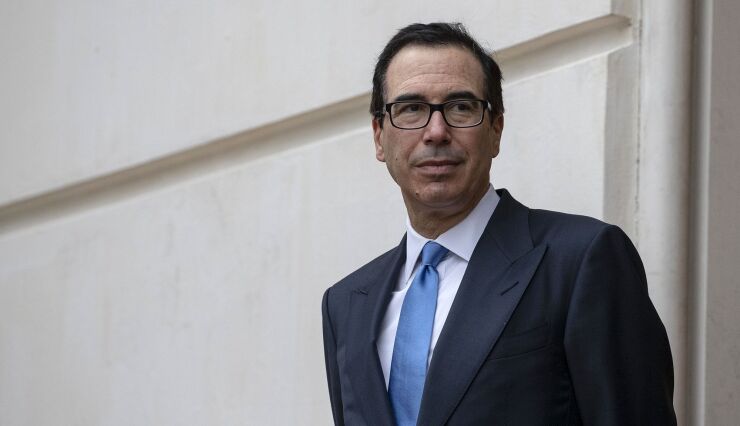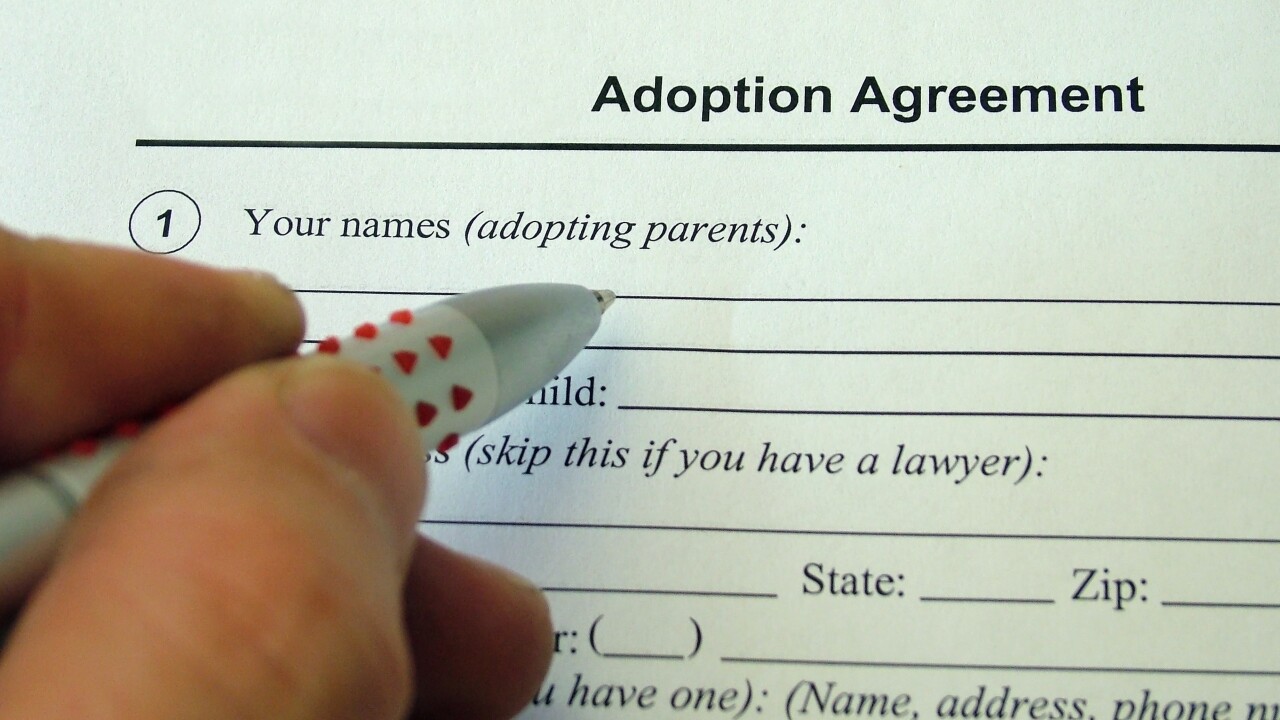Although the Paycheck Protection Program under the CARES Act has been criticized on a number of sides, it was passed with lightning speed and made massive strides toward getting funding into the hands of those that needed it. The attention, for those that received aid, has now focused on the forgiveness aspect of the loans received, according to Tom West, a principal in the pass-throughs group of the Washington national tax practice of Big Four firm KPMG.
“At first, the issue was eligibility,” he said. “Now that we’re past that the question becomes what about forgiveness — how do you document expenses? Assuming you get some amount forgiven, what are the tax consequences?”
“Initially, there was a question as to whether or not the expenses that used proceeds of a forgiven PPP loan impacted the deductibility of the expenses,” observed West. “The IRS answered that in Notice 2020-32. It said that in fact those expenses are not deductible.”
West, a former tax legislative counsel and acting assistant secretary of Treasury for Tax Policy, believes the notice was wrong. “The ruling came as a surprise to many affected by the issue,” he said. “There are merits to both sides. From a policy standpoint, the IRS could have gone either way. They may have kicked up a hornets’ nest on this. If you think about a normal loan and you use its proceeds on business expenses, it would be deductible. If for whatever reason that loan is ultimately forgiven, it doesn’t change the deductibility of expenses but it creates cancellation of debt income.”
“Unfortunately, the conversation around this refers to it as a ‘double benefit’ if expenses paid with the forgiven loan proceeds are deductible,” he said. “I don’t see it as a double benefit, but as an intended benefit.”
“Many members of Congress, including Senate Finance Committee Chair Chuck Grassley, have stated that the IRS’s position in Notice 2020-32 is contrary to the legislative intent of the PPP,” indicated Norman Lencz, a tax partner at law firm Venable. “In addition, a number of professional organizations, such as the AICPA, have issued statements requesting that Notice 2020-32 be rescinded or overruled by legislative action. Furthermore, many practitioners have argued that the notice is inconsistent with the Internal Revenue Code and the CARES Act.” As a result, he predicted, “The position set forth in Notice 2020-32 may be reversed by legislative action, further IRS guidance, or a court ruling.”
The rules
In mid-May, the Small Business Administration released a loan forgiveness application, and detailed instructions, which include a number of measures aimed at easing compliance burdens and the process for borrowers:
- Options for borrowers to compute the payroll costs using an “alternative payroll covered period” that fits in with borrowers’ regular payroll cycles;
- Flexibility to include eligible payroll and non-payroll expenses paid or incurred during the eight-week period after businesses get their PPP loan;
- Step-by-step instructions on how to do the calculations required by the CARES Act to confirm eligibility for loan forgiveness;
- “Borrower-friendly” implementation of statutory exemptions from loan forgiveness reduction based on rehiring by June 30; and,
- The addition of a new exemption from the loan forgiveness reduction for borrowers who have made a good-faith, written offer to rehire workers that was declined.
“Businesses whose loans have been funded must now focus on carefully tracking how they spend their PPP loan,” said Michael Greenwald, partner and business entity tax practice leader at Top 100 Firm Friedman LLP. “The second round of PPP was a little more efficient in reaching borrowers that were originally intended by the program. They limited the ability of larger banks to dominate the flow of funds by turning off the windows for them for a period of time each day, and they set aside money for smaller community bands and credit unions.”
Naturally, there are issues as to what is included in eligible costs, Greenwald said. “Eligibility for forgiveness of the PPP loan may be reduced if less than 75 percent of the funds are spent on payroll costs, fewer full-time-equivalent employees are employed than were employed during the base period, the salary or wages of an employee are less than 75 percent compared to the prior quarter, and the reduction in number of employees and/or compensation isn’t cured by June 30, 2020.”
Greenwald suggests keeping PPP loan proceeds in a separate bank account to more easily track how the funds are being used. He noted that the guidance so far doesn’t cover all situations. “What if an entity rents space from another entity that is a related party? Or when I took the loan I believed sincerely that I qualified due to economic uncertainty. How does one define economic uncertainty — is it just for the eight-week period or the entirety of my economic future? ... The SBA has threatened criminal penalties for misrepresentation and false certification, so documentation of the usage of these funds is crucial.”
“Secretary of Treasury Mnuchin has said they would review every loan to make sure that the people getting loans really had the need,” noted Dan Friederich, managing director at Top 100 Firm CBIZ MHM. “Who knows if they have the manpower to do that? There are a lot of open questions on forgiveness. For example, how do you account for expenses during the eight-week period — cash or accrual or some other method? How do you calculate the number of full-time employees for purposes of forgiveness? There’s no right or wrong answer, we just need certainty.”

Real-world issues
“There’s a lot of confusion waiting for guidance,” agreed Brian Newman, a partner and federal tax practice leader at Top 100 Firm CohnReznick. “One of the biggest issues in the restaurant/hospitality area is that they will not be able to staff up quickly enough. A restaurant that had 100 employees when it closed isn’t going to bring back all 100 back immediately — there will be limitations on how many can be seated at one time.”
“The other issue is that many of the staff won’t want to come back, either because they are afraid or because they’re making more money on unemployment,” he said. “That makes it hard to meet the criteria of spending 75 percent on payroll during the eight-week period.”
“I’m hopeful that Congress will take this into account and modify the requirements to coincide with what’s happening in the real world, where things come back online very slowly and businesses need this money to survive,” he said. “Many think that they might as well stay closed if they’re not going to be able to meet the criteria for forgiveness. They believe they will lose less money by staying closed than spending money on the required payroll, bringing back staff, and then not meeting the forgiveness requirements.”
Roger Harris, president of Padgett Business Services, agreed. “Unemployment is attractive, and it’s hard to get people to return to work if the business isn’t open. Many are asking to change the 75-25 percent rule [at least 75 percent, with the remaining 25 percent on rent or mortgage interest, plus utilities] to a 50-50 one, to make it easier for small businesses to qualify for forgiveness.”
At press time, Treasury Secretary Mnuchin had indicated that the government would consider how to change the program to help small businesses meet the qualifications for forgiveness.
The other issue concering Harris is the eight-week period within which to use the loan proceeds. “Borrowers should have the option to select any period that’s within six months of receipt of the loan proceeds,” he said.





